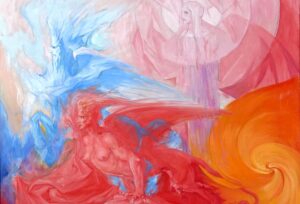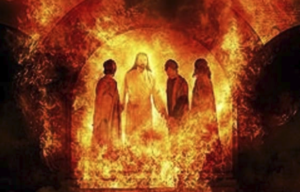di Piero Cammerinesi
Quando chiudiamo gli occhi e ci facciamo delle immaginazioni usciamo per alcuni momenti dalla ferrea realtà che ci incatena inesorabilmente alla terra e alle percezioni dei sensi.
Le immaginazioni possono essere luminose ma anche terribilmente oscure.
Possiamo immaginare l’amore più disinteressato per l’essere amato ma anche l’odio più feroce per i nostri simili.
Possiamo farci delle immaginazioni aderenti alla realtà – interiore o esteriore – e quindi giuste, o contraddicenti la realtà.
La trama immaginativa è neutra, dipende cosa ci tessiamo; è un po’ come il linguaggio.
Nel linguaggio la trama è costituita dalle lettere a,b,c,d…
Con esse si possono scrivere le peggiori bestemmie o le più elevate liriche. Sempre da lettere sono costituite.
Non è nelle lettere dell’alfabeto né nelle immaginazioni il bene o il male.
Sia le parole che le immaginazioni creano il mondo.
* * *
El que lee mís palabras está inventándolas
(Jorge Luis Borges)
by Piero Cammerinesi
When we close our eyes and make imaginations we break out for a few moments from the fierce reality that chains us inexorably to the earth and sense perceptions.
Imaginations can be bright but also terribly dark.
We can imagine the most selfless love for being loved but also the fiercest hate for our fellow human beings.
We can make our imaginations adherent to reality — inner or outer — and therefore right, or inconsistent with reality.
The imaginative fabric is neutral, depending on what we weave into it; it is a bit like language.
In language, the fabric consists of the letters a,b,c,d, etc.
With them one can write the worst blasphemies or the highest lyrics. Always from letters they are made up.
It is not in the letters of the alphabet nor in the imaginations the good or the evil.
Both words and imaginations create the world.
* * *
El que lee mís palabras está inventándolas
(Jorge Luis Borges)




